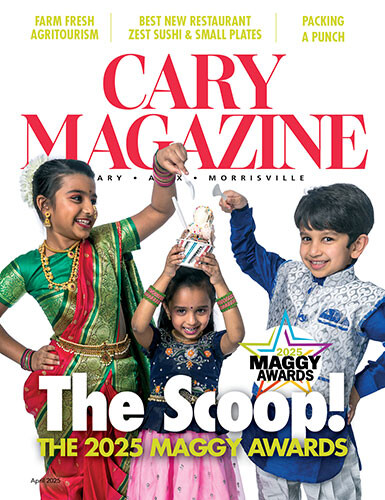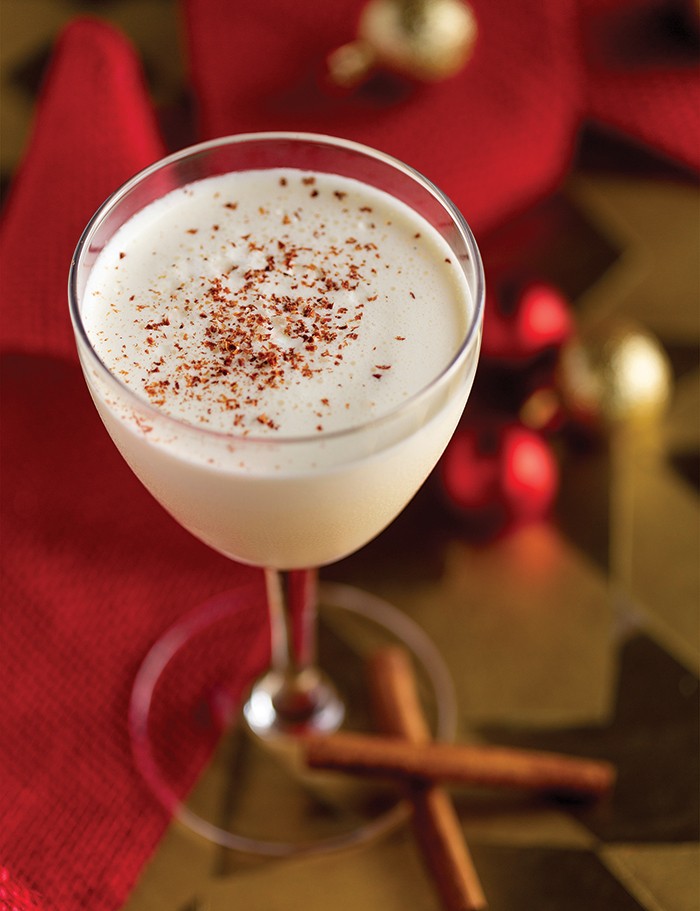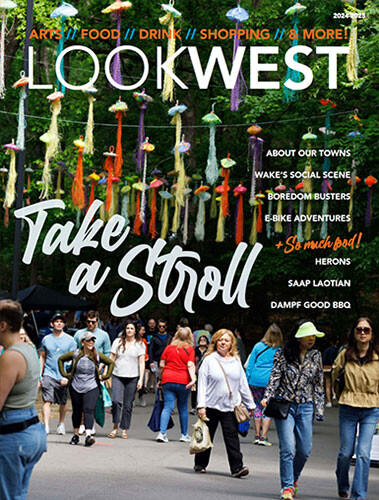When you’re planning your next holiday party, forget the cartons of artificially flavored eggnog. Shove the jar of iridescent maraschino cherries to the back of the fridge.
Although convenient, these pre-packaged ingredients are hardly celebratory. Why not spend a little time and effort to create a delicious, homemade holiday tipple?
“Just like people prepare sweets, cakes and goodies during Christmas, I think cocktails fall right in line with that,” said Matthew Bettinger, co-owner of Sidebar in downtown Cary. “It’s a chance to celebrate and share something special with your friends, your family or whoever you happen to come across.”
Whether you’re whipping them up to give as gifts or to pour in a punchbowl, these decadent drinks are sure to impress. You might find yourself making them year after year.
Aged eggnog
Eggnog has been a tradition for Bettinger for nearly a decade, but his recipe has a twist. The eggnog ages in the refrigerator for at least four weeks.
“It really starts around Thanksgiving — whether it’s day of, a few days before, or a few days after,” he said. “We’ll make a fairly large batch, keep it a cool dark place, and then once the week of Christmas comes along, we crack it open.”
Aging the eggnog allows the flavors to mellow and creates a rounder and smoother taste, Bettinger says.
“It becomes more of a complete, whole flavor profile,” he said. “That goes for a lot of beverages, whether you’re infusing something, or your creating something like an eggnog. It’s always better once those flavors have had a chance to settle down and really melt together.”
And if consuming raw eggs is a concern, the three-week resting period allows the alcohol to kill any stray salmonella bacteria. This added benefit was demonstrated in a 2008 video by NPR’s “Science Friday”.
Bettinger has prepared and bottled the eggnog for gifts in the past, but these days, the festive beverage is consumed at his family’s Christmas celebration or at holiday parties.
“People identify — I know I do emotionally — to times of the year as well as flavors and smells, and the cocktail really wraps all that together,” he said.
Matt Bettinger’s Aged Eggnog
Yield: About a gallon
“The quality of ingredients shows, so procure the best eggs and cream you can,” said Bettinger. “Feel free to play with the spirits. If it is too strong, you can back off the alcohol quantities by a few ounces. You can also add more whipping cream when serving to help cut the proof.”
This large batch is plenty for a family gathering or two, but it can be scaled down, he says.
24 eggs
1 750-milliliter bottle Old Grand-Dad bourbon whiskey, or other good-quality bourbon
1½ cups Plantation Original Dark Rum, or other aged rum
2 cups sugar
Working in batches, beat eggs thoroughly using a stand mixer.
Combine bourbon and rum. With the stand mixer on its lowest setting, add the alcohol slowly to the eggs. Take your time with this step, as adding the alcohol too quickly will curdle the eggs.
Lastly, add the sugar and mix until everything is well combined.
Put mixture in a large glass container, and keep in a cool dark place for at least three weeks. Leave the lid slightly open for a few days before fully closing it. You want air flow to help the ingredients combine and mellow.
To serve:
4-5 cups whipping cream
4 teaspoons vanilla
1 cup sugar
Whip cream into soft peaks; add vanilla and sugar. Continue whipping until cream forms stiff peaks.
In a large serving bowl, fold the whipped cream into the eggnog base.
Serve topped with freshly grated cinnamon or nutmeg.
Bourbon cherries
Wayne Childers, who is known for his bourbon-soaked cherries, loves to entertain and to tinker in the kitchen.
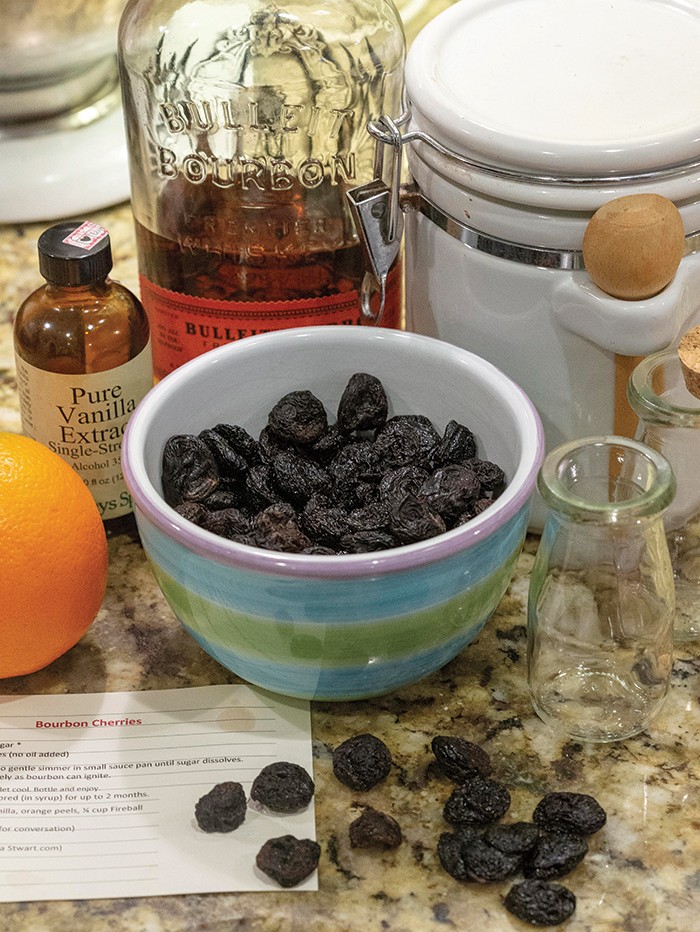
Wayne Childers has tweaked his recipe over the years, but never strays too far from the basic ingredients. “I’ve added a splash of vanilla, some orange peel to deepen the flavor a bit,” he says. “I try not to mess with it too much, because it’s so good already, and you don’t want to take away from the cherries and the bourbon.”
“I’ve been around food all my life,” said Childers, who owns Ah Ha!, a business consulting firm in Cary, with his wife, Susannah. “My father was an executive at Winn-Dixie, so I was in grocery stores and around food a lot.”
The cherries, which he’s been making and giving away for four years, began as an experiment. A bourbon-loving friend had invited Childers on several outings to learn more about the spirit. And while the bourbon was tasty, one cocktail ingredient was not.
“When we would go out, whether it was an old fashioned or a Manhattan, it just killed me with the super, sickly-sweet maraschino cherries,” he said. “I hated them.”
There’s got to be a better way, Childers thought.
He came across a recipe for bourbon-soaked cherries and whipped up a batch.
“It was off the hook — crazy good,” he said. “People were like, ‘Can I have more? Can I have a bigger jar? Can you refill it please?’”
He makes and bottles at least two batches of cherries around Thanksgiving. They are tucked into gift baskets for close friends and neighbors, along with several varieties of homemade biscotti, baked by his wife. Childers also makes sure he has plenty of cherries on hand for last-minute gifts.
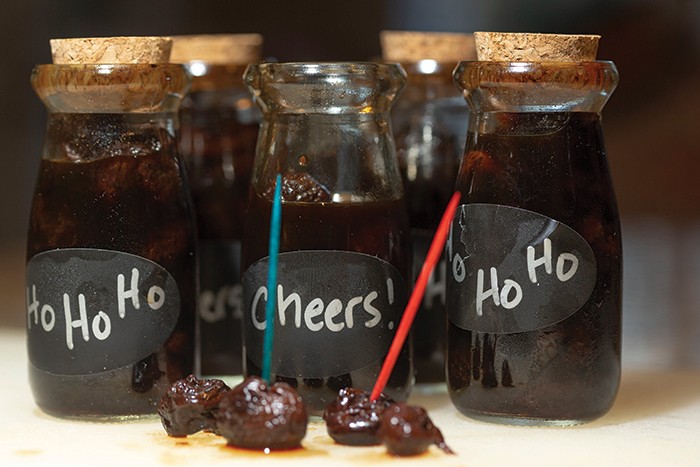
Wayne Childers suggests using bourbon cherries in cocktails instead of maraschino cherries, or dropping them into a glass of prosecco. “They’re perfect for a party, a little hostess gift when you walk in the door,” he says.
Bourbon-Soaked Cherries
From Wayne Childers, adapted from marthastewart.com
Yield: 1½ cups
1 cup bourbon whiskey
2 tablespoons sugar
4 ounces dried cherries (no oil added)
Optional ingredients: A strip of orange peel or ½ teaspoon vanilla
Bring bourbon, sugar and orange peel, if using, to a gentle simmer in small saucepan until sugar dissolves. Watch pan closely as bourbon can ignite.
Take bourbon mixture off the heat and add vanilla, if using. Pour over cherries, and let cool. Place cherries and syrup into small glass bottles. Refrigerate cherries for at least 12 hours and up to two months.
Use the cherries in your favorite cocktail, or enjoy cherries and syrup poured over ice cream.
Coquito
As a child in Ohio, Edith Jachym remembers watching her mother make coquito, the traditional Puerto Rican holiday beverage. The labor-intensive process required cooking egg yolks slowly to thicken the boozy mixture of coconut cream, sweetened condensed milk, evaporated milk, spices and rum.
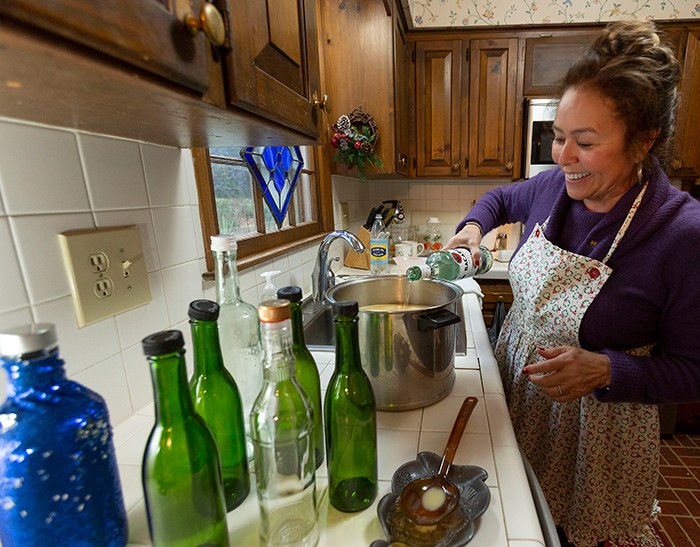
Edith Jachym says the traditional way to make coquito involves cracking open a fresh coconut, grating the flesh and squeezing out the juice. Canned ingredients make the process a lot easier.
“When I was 12 or 13, she started letting me do the stirring,” Jachym said of her mother. “She would come over and look at it; she would quality-control it, making sure that egg didn’t cook.”
She started making it for herself in 1978, but it took a lot of experimenting, she says. Her mother had a written recipe, but many adjustments had been made over the years.
“I started making it as gifts,” she said. “When I moved to North Carolina, the people I worked for, I took them a little bottle, and they were like, ‘Oh my God! What is this?’”
Coquito became a staple at her holiday parties, and many of her friends requested bottles of their own. Eventually, she was making around two dozen bottles to give away every year. She would start stocking up on the ingredients in September, so as not to have a huge grocery bill in November.
Jachym says she’s winding down now and makes the drink less frequently. Around the holidays, it’s her son who stands over the stove stirring the pot to make coquito for his friends.
“He continues the tradition of giving it to folks he knows who would appreciate it,” she said.
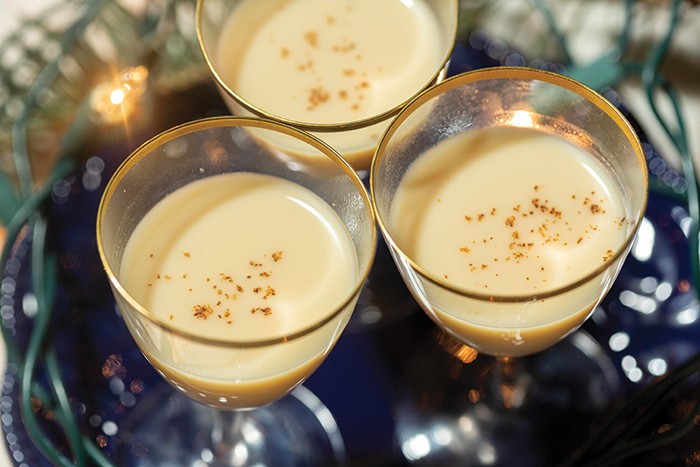
Coquito can be served on the rocks or in small cordial glasses, says Jachym. It’s quite sweet and rich, so a little is satisfying.
While Edith Jachym prefers not to share her family’s recipe, try this classic version of Puerto Rican coquito.
Coquito
Yield: 16-20 servings
6-8 cinnamon sticks
2-3 whole cloves
1-2 whole star anise
2 cups water
4 large egg yolks
1 12-ounce can evaporated milk
1 15-ounce can sweetened cream of coconut
1 14-ounce can coconut milk
1 14-ounce can sweetened condensed milk
1 tablespoon vanilla
3 cups rum, white or gold, to taste
In a 2-quart saucepan, heat water, cinnamon sticks, cloves and anise to boiling over high heat. Reduce heat to medium, and cook until liquid is reduced to one cup. Allow to cool slightly and strain.
In a large heavy-bottomed stock pot, beat egg yolks and evaporated milk with a wire whisk until well-mixed. Cook over low heat, stirring constantly until mixture thickens and coats a spoon, about 10 minutes (do not boil). Set aside to cool slightly.
Combine cooled cinnamon-flavored liquid, cream of coconut and coconut milk; add to egg-yolk mixture. Stir in sweetened condensed milk, vanilla and rum.
Funnel into clean glass bottles and refrigerate until ready to serve.
To serve, shake bottle vigorously to reincorporate coconut cream, pour in a small glass, and garnish with ground cinnamon. It can also be served on the rocks in a larger glass.
- Shop Around the Corner
- Nonprofit Spotlight: Diamante
- Small Business Spotlight: La Therapie Spa
- The Holidays in a Glass
- Let the Good Times Roll
- Restaurant Profile: Asali Desserts & Café
- Once You Go by Lynnwood Brewing Concern
- North Carolina Holiday Spirits
- Early Spring: Forcing Tazetta Daffodils
- From the Editor: November/December 2019
